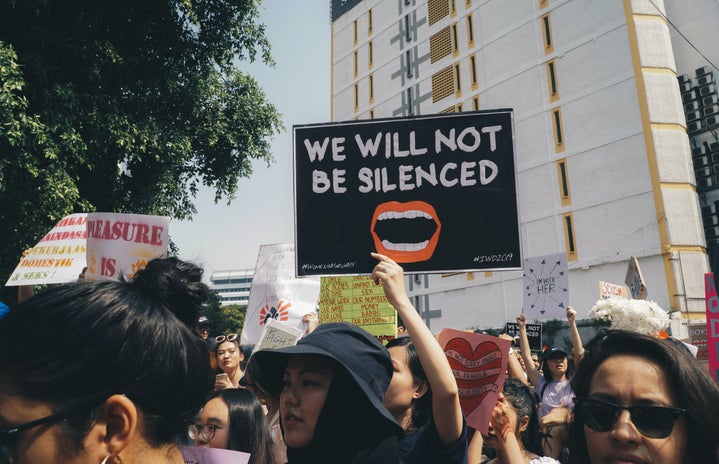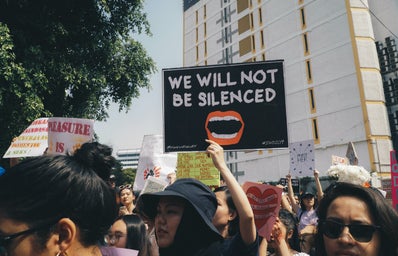Do you carry mace or a knife in your purse for protection? When you’re out at night, do you avoid walking alone or wearing your hair up in a ponytail because you’re afraid of being raped or even murdered? Well you’re not alone and unfortunately, you have a reason to be afraid. Femicide is a tragedy that persists globally and worsens with each passing day. It is our responsibility to find a way to stop it and save millions of women around the world.
Femicide is the most extreme form of gender-based violence in existence. To be put simply, it is the murder of women by their partners or other intimate relations. The World Health Organization notes that femicide is “usually perpetrated by men, but sometimes female family members may be involved.” It can be distinguished from homicide by several key distinguishing features. For example, most cases of femicide are committed by partners or ex-partners, and involve ongoing abuse in the home, threats or intimidation, sexual violence or situations where women have less power or fewer resources than their partner. Common forms of femicide include serial femicide, intimate femicide, non-intimate femicide, murder in the name of “honor” or dowry-related femicide, and more.
Feminist author Diana E.H. Russell first popularized this term in 1976, and it has since remained prevalent in our vocabulary. According to Global Citizen, “other forms of femicide include sorcery- or witchcraft-related killings, armed conflict-related killings, gender identity- and sexual orientation-related killings, and ethnic and Indigenous identity-related killings.”
The statistics are terrifying- according to the Femicide Census, a woman is killed by a man every three days. However, the numbers don’t stop there. According to the United Nations (as of March 2021), “Globally, an estimated 736 million women….have been subjected to intimate partner violence, non-partner sexual violence, or both at least once in their life (30 per cent of women aged 15 and older).”
To make matters worse, the majority of these cases go unreported, similar to cases of rape or sexual assault. Many women feel that they cannot turn to friends, family, or the justice system in order to seek justice for the wrong that has been done to them or their loved one. According to the UN, “Fewer than 40 per cent of the women who experience violence seek help of any sort. In the majority of countries with available data on this issue, among women who do seek help, most look to family and friends, and very few look to formal institutions, such as police and health services. Fewer than 10 per cent of those seeking help appealed to the police.”
The cases of femicide and domestic violence have continued to rise dramatically during the COVID-19 pandemic. As families are stuck at home quarantining for months on end, we have seen an exponential uptick in the cases of femicide in the past year. The UN reports that “calls to helplines have increased five-fold in some countries as rates of reported intimate partner violence increase because of the COVID-19 pandemic. Restricted movement, social isolation, and economic insecurity are increasing women’s vulnerability to violence in the home around the world.” Dr. Tedros Adhanom Ghebreyesus, Director-General of the World Health Organization, commented that the “violence against women is endemic in every country and culture, causing harm to millions of women and their families, and has been exacerbated by the COVID-19 pandemic. But unlike COVID-19, violence against women cannot be stopped with a vaccine. We can only fight it with deep-rooted and sustained efforts – by governments, communities and individuals – to change harmful attitudes, improve access to opportunities and services for women and girls, and foster healthy and mutually respectful relationships.”
The cases of femicide continue to rise with each passing day, and these perpetrators of violence must be stopped. Although it is an overwhelmingly large problem that has persisted for centuries, in order to save the female population, we must find a way to bring it to an end. Several countries and organizations have already begun this mission and pursued this effort. In 2017, the UN, the EU, and other partners created the Spotlight Initiative in order to “eliminate violence against women and girls.” According to the UN, they have already yielded positive results as “the Initiative’s comprehensive violence prevention programmes have begun operating in 13 countries across Africa and Latin America, with a direct impact on an estimated 38 million women and girls, men and boys.” The WHO also has other ways that they believe will aid in ending femicide including strengthening surveillance and screening of femicide and intimate partner violence, training and sensitizing health staff, training and sensitizing police, increasing prevention and intervention research, reducing gun ownership and strengthening gun laws, and more.
Although the threat of femicide is a fear I carry from day to day, I am hopeful that we can create an environment in which young girls and women feel safe and free to do as they please. I look forward to a future in which I am comfortable in my own skin and not wary of every man I meet, worrying about potential threats. I truly believe that femicide can be brought to an end if we all work together to protect women, for women.


